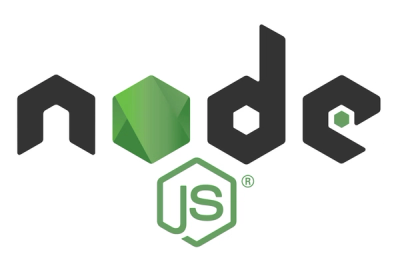
Security News
Django Joins curl in Pushing Back on AI Slop Security Reports
Django has updated its security policies to reject AI-generated vulnerability reports that include fabricated or unverifiable content.
Don't repeat yourself, JSON: Add support for (circular) references, class instances, ...
JSON-dry allows you to stringify objects containing circular references, dates, regexes, ...
It can also be used to serialize and revive instances of your own classes.
$ npm install json-dry
This is a basic example of stringifying an object (containing multiple references to the same object) and parsing it again.
var Dry = require('json-dry');
// The object we'll serialize later
var obj = {};
// The object we'll make multiple references to
var ref = {
date : new Date(),
regex : /test/i
};
// Now we'll make multiple references:
// `reference_one` and `reference_two` both point to the same object
// `date` refers to a `Date` object
obj.reference_one = ref;
obj.reference_two = ref;
obj.date = ref.date;
// Stringify the object
var dried = Dry.stringify(obj);
// {
// "reference_one": {
// "date": {
// "dry": "date",
// "value": "2018-01-14T17:45:57.989Z"
// },
// "regex": {
// "dry": "regexp",
// "value": "/test/i"
// }
// },
// "reference_two": "~reference_one",
// "date": "~reference_one~date"
// }
// Now we'll revive it again
var undried = Dry.parse(dried);
// { reference_one: { date: 2018-01-14T17:56:43.149Z, regex: /test/i },
// reference_two: { date: 2018-01-14T17:56:43.149Z, regex: /test/i },
// date: 2018-01-14T17:58:50.427Z }
// See if they're the same objects (as it should)
undried.reference_one == undried.reference_two;
// true
// The date outside of the reference object is also the same reference
undried.reference_one.date == undried.date;
// true
Let's create an example class you might want to serialize and revive:
// The class constructor
function Person(options) {
this.firstname = options.firstname;
this.lastname = options.lastname;
}
// A simple method that prints out the full name
Person.prototype.fullname = function fullname() {
return this.firstname + ' ' + this.lastname;
};
// Create an object
var jelle = new Person({firstname: 'Jelle', lastname: 'De Loecker'});
// Test out the fullname method
jelle.fullname();
// returns "Jelle De Loecker"
So now we've created a very basic class, let's register the class and add the 2 required methods for serializing & reviving.
// We need to register the class
Dry.registerClass(Person);
// Add the `toDry` method that will be called upon when serializing/stringifying
Person.prototype.toDry = function toDry() {
return {
value: {
firstname : this.firstname,
lastname : this.lastname
}
};
};
// Now add the `unDry` method as a **static** method, on the constructor
Person.unDry = function unDry(value) {
// How you do this is up to you.
// You can call the constructor for this simple class,
// or you can use Object.create, ...
var result = new Person(value);
return result;
};
Now let's try stringifying it:
var dried = Dry.stringify(jelle);
// {"value":{"firstname":"Jelle","lastname":"De Loecker"},"dry_class":"Person","dry":"toDry","drypath":[]}
// And parse it again
var undried = Dry.parse(dried);
// Person { firstname: 'Jelle', lastname: 'De Loecker' }
// And it works
undried.fullname();
// returns "Jelle De Loecker"
While Dry.stringify will return you with a json-valid string, Dry.toObject will give you a valid simplified object.
In fact: Dry.stringify is just a function that performs JON.stringify on Dry.toObject's output.
Why would you want to use this? Things like Workers and IndexedDB communicate data using the structured clone algorithm. So instead of performing expensive stringify operations you can just use these objects.
JSON-Dry offers a specialized clone method. While in theory you could clone an object by drying end reviving it, like so:
var cloned = Dry.parse(Dry.toObject(jelle))
This is 14x slower than using clone, because toObject needs to generate paths, escape certain string values and create wrapper objects. These expensive things can be ignored when cloning:
var cloned = Dry.clone(jelle);
If you've added a toDry and unDry method to your class, by default the clone method will use those to create the clone.
However, you can also create another method that gets precedence:
Person.prototype.dryClone = function dryClone(seen_map, custom_method) {
return new Person({
firstname : this.firstname,
lastname : this.lastname
});
}
The clone method takes an extra parameter called custom_method. If you're cloning something that has a function property with the same name, that'll be used.
This can be used when you want to redact certain parts, for example:
Person.prototype.specialOccasionClone = function specialOccasionClone(seen_map, custom_method) {
return new Person({
firstname : this.firstname[0] + '.', // Only add the first letter of the name
lastname : this.lastname
});
};
var special_clone = Dry.clone(jelle, 'specialOccasionClone');
special_clone.fullname();
// Returns "J. De Loecker"
Earlier versions of the project were heavily based on circular-json, a small library that adds (circular) reference support to JSON.
A lot of the JavaScript code on my websites was already shared between the server & client side, but I also wanted an easy way of sending data to the client while retaining references & class instances, so I started adding features to circular-json and called it json-dry (dry as in don't repeat yourself).
After version 0.1.6 I integrated json-dry into my protoblast library, and development continued in there. But now it has deserved its own repository once again.
This version is a rewrite of earlier versions. circular-json used (and still uses) multiple arrays to keep track of already used objects, but json-dry now uses WeakMaps, something that makes the code easier to maintain and is also faster.
circular-json was also implemented as a replacer and reviver function to JSON.stringify and JSON.parse respectively. json-dry actually creates a new object before stringifying it.
Because multiple references are represented as ~paths~to~the~first~reference, the size of the JSON string can be a lot smaller. Can be, though, because sometimes reference paths are longer than the object they are refering to.
Because of this, as soon as json-dry encounters a new path that is smaller than the previous one, it'll use that in the future. This helps a bit, though more improvements could be made in the future.
We use SemVer for versioning. For the versions available, see the tags on this repository.
This project is licensed under the MIT License - see the LICENSE file for details
Many thanks to WebReflection, whose circular-json was the basis for earlier versions of this project.
1.0.12 (2019-11-22)
FAQs
Don't repeat yourself, JSON: Add support for (circular) references, class instances, ...
The npm package json-dry receives a total of 530 weekly downloads. As such, json-dry popularity was classified as not popular.
We found that json-dry demonstrated a healthy version release cadence and project activity because the last version was released less than a year ago. It has 0 open source maintainers collaborating on the project.
Did you know?

Socket for GitHub automatically highlights issues in each pull request and monitors the health of all your open source dependencies. Discover the contents of your packages and block harmful activity before you install or update your dependencies.

Security News
Django has updated its security policies to reject AI-generated vulnerability reports that include fabricated or unverifiable content.

Security News
ECMAScript 2025 introduces Iterator Helpers, Set methods, JSON modules, and more in its latest spec update approved by Ecma in June 2025.

Security News
A new Node.js homepage button linking to paid support for EOL versions has sparked a heated discussion among contributors and the wider community.